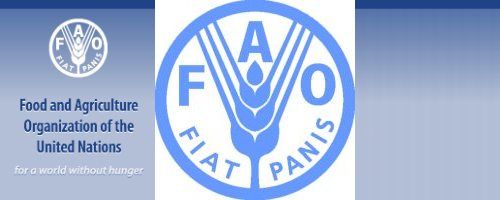UN project seeks to make use of Nile’s resources to fend off poverty and hunger
UN project seeks to make use of Nile’s resources to fend off poverty and hunger
27 October 2011
The report, which includes the results of a decade-long project led by the Food and Agriculture Organization (FAO) and financed by Italy, notes that “environmental degradation, drought, weak institutions, low financial capacity, inadequate infrastructure and social instability conspire to perpetuate poverty in the region” making it essential to have a planning strategy in place.
According to FAO, the population in the Nile basin, which currently consists of some 200 million people, is expected to increase by between 61 and 82 per cent by 2030. This is of particular concern since some of the 11 countries that share the Nile – Burundi, the Democratic Republic of the Congo (DRC), Egypt, Eritrea, Ethiopia, Kenya, Rwanda, South Sudan, Sudan, Tanzania and Uganda – are among the poorest in the world.
As the population grows, finding new ways to use water will become even more essential to support better planning and prevent food insecurity, the report notes, adding that there is a “narrow window of opportunity for reversing the negative trends in the region.”
“Up until now, there has been very little systemic study of how the Nile’s waters are used – or could be used – to grow food, and key pieces of information that would allow for what we call ‘sound water accounting’ have been missing,” said Pasquale Steduto, head of the FAO’s Water Development and Management Unit.
“The data this project has acquired and the information products it has produced will fill these gaps and let the governments of the region make the most of the Nile’s resources,” he said.
The report, Information Products for Nile Basin Water Resource Management, says 80 per cent of renewable water resources in the Nile basin are already used for agriculture purposes, and the potential to increase this water supply is very limited.
“It becomes very, very important that water authorities have detailed information for good water accounting, and planning tools that let them weigh the costs and benefits of their policies and their resource management choices,” Mr. Steduto said.
The project, whose results were presented by the FAO in Kigali, Rwanda, to the authorities of governments in the region, has gathered information on water and agriculture, put together a forecast of the region’s future food requirements, carried out a survey of the types of farming systems practised along the Nile, and analyzed possible future scenarios for water management and agriculture development.
In addition, the project produced 18 technical manuals on water measurements techniques and technologies, and trained hundreds of staff in water and agriculture agencies.
Mr. Steduto said the project had also strengthened a shared vision of sustainable development among the governments of the Nile.
“Only through a joint effort of the riparian countries can a sustainable future be designed and built,” he said.
###
> UN Food and Agriculture Organization (FAO).
The Food and Agriculture Organization of the United Nations (FAO) is an intergovernmental organization and has 191 Member Nations, two associate members and one member organization, the European Union. Achieving food security for all is at the heart of FAO’s efforts – to make sure people have regular access to enough high-quality food to lead active, healthy lives.

FAO’s mandate is to raise levels of nutrition, improve agricultural productivity, better the lives of rural populations and contribute to the growth of the world economy.
The Food and Agriculture Organization of the United Nations (FAO) is working with its Members and the entire international community for achievement of the Millennium Development Goals.
These eight goals – each with specific targets and indicators – are based on the United Nations Millennium Declaration, signed by world leaders in September 2000. They commit the international community to combating poverty, hunger, disease, illiteracy, environmental degradation, and discrimination against women.
![]()
The eight Millennium Development Goals are:
Goal 1: Eradicate extreme poverty and hunger
Goal 2: Achieve universal primary education
Goal 3: Promote gender equality and empower women
Goal 4: Reduce child mortality
Goal 5: Improve maternal health
Goal 6: Combat HIV/AIDS, malaria and other diseases
Goal 7: Ensure environmental sustainability
Goal 8: Develop a Global Partnership for Development
* More information at UN Food and Agriculture Organization (FAO)
###
> United Nations (UN).
 The United Nations was established on 24 October 1945 by 51 countries committed to preserving peace through international cooperation and collective security. Today, nearly every nation in the world belongs to the UN: membership totals 192 countries.
The United Nations was established on 24 October 1945 by 51 countries committed to preserving peace through international cooperation and collective security. Today, nearly every nation in the world belongs to the UN: membership totals 192 countries.
When States become Members of the United Nations, they agree to accept the obligations of the UN Charter, an international treaty that sets out basic principles of international relations. According to the Charter, the UN has four purposes:
- to maintain international peace and security;
- to develop friendly relations among nations;
- to cooperate in solving international problems and in promoting respect for human rights;
- and to be a centre for harmonizing the actions of nations.
###
* The above story is adapted from materials provided by United Nations (UN)
** More information at United Nations (UN)






















